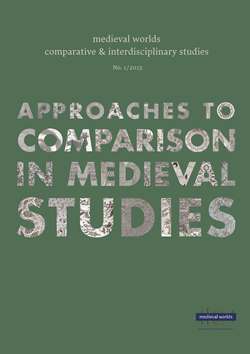Robert Moore
S. 16 - 24
doi:
10.1553/medievalworlds_no1_2015s16
Verlag der Österreichischen Akademie der Wissenschaften
Abstract:
The ›Papal Revolution‹ in late eleventh and early twelfth century western Europe and the unsuccessful campaign by Wang An Shi and his followers to reform the imperial administration of Song China at just the same time are regarded as critical turning points in their respective histories. They are strikingly similar in some crucial respects. Both represented the responses of dominant elites to fundamental challenges to their traditional positions. Similar crises seem to have occurred at the same period in other citied regions of Eurasia. Each resulted, to varying degrees, in the emergence of a new or newly defined learned elite which drew its authority from its role as custodian and interpreter of a body of texts and associated ritual practices held to have been inherited from antiquity or late antiquity. The cultural hegemonies thus established in their respective regions endured until c. 1800 or later, constituting the ›civilizations‹ which are seen as the building blocks of modern world history. I have argued that in Latin Europe the crisis gave birth to an enduring clerical elite whose members accorded over-riding loyalty to nascent governing institutions in church and state rather than to their kin. Elsewhere the cultural power of the learned was essentially directed to sustaining the interests of their kingroups. In 2009, borrowing the phraseology of Kenneth Pomeranz, I suggested that these contrasting outcomes constituted a ›First Great Divergence‹ between western Europe and the other Eurasian ›civilizations‹. In this paper the appropriateness of that description is reconsidered and dismissed, as embodying a simplistic teleological polarisation of the kind that Pomeranz had rightly rejected. Rather, it is suggested that the outcome of the general – though not universal – crisis of elites in early second-millennium Eurasia would be better described as a Great Diversification.
Rise of the West; East-West Divergence; Europe and China; Middle Ages; bureaucracy; clerical elites; gentry
Published Online:
2015/06/30 10:21:27
Object Identifier:
0xc1aa5576 0x00324b5b
Rights:All rights reserved.For questions regarding copyright and copies please contact us by email.
MEDIEVAL WORLDS provides a new forum for interdisciplinary and transcultural studies of the Middle Ages. Specifically it encourages and links comparative research between different regions and fields and promotes methodological innovation in transdisciplinary studies. Focusing on the Middle Ages (c. 400-1500 CE, but can be extended whenever thematically fruitful or appropriate), MEDIEVAL WORLDS takes a global approach to studying history in a comparative setting.
MEDIEVAL WORLDS is open to regular submissions on comparative topics, but also offers the possibility to propose or advertise subjects that lend themselves to comparison. With a view to connecting people working on related topics in different academic environments, we publish calls for matching articles and for contributions on particular issues.
TABLE OF CONTENTS
Walter POHL and Andre GINGRICH
Medieval Worlds: Introduction to the First Issue
Patrick GEARY, The Discourse of Herrschaft as the Practice of Herrschaft in the Fifth Century
Robert MOORE, The First Great Divergence?
Lars Boje MORTENSEN, Comparing and Connecting: the Rise of Fast Historiography in Latin and Vernacular (Twelfth to Thirteenth Century)
Helen SIU, Historical Anthropology: A View from »South China«
COMPARATIVE PAPERS: UNIVERSAL HISTORIES
Ian WOOD, Universal Chronicles in the Early Medieval West
Ann CHRISTYS, Universal Chronicles in Arabic before c. 900
COMPARATIVE HISTORY IN THE MAKING: ONGOING MAJOR RESEARCH PROJECTS
Gwen BENNETT, »I Spy with my Little Eye«: GIS and Archaeological Perspectives on Eleventh Century Song Envoy Routes in the Liao Empire (Kitan-Liao Archaeological Survey and History KLASH)
Michael BORGOLTE, Foundations »For the Salvation of the Soul« – an Exception in World History? (Foundations of Medieval Societies FOUNDMED)
Catherine HOLMES and Naomi STANDEN, Defining the Global Middle Ages (AHRC Research Network)
Eduardo MANZANO, Why Did Islamic Medieval Institutions Become So Different from Western Medieval Institutions? (Power and Institutions in Medieval Islam and Christendom PIMIC)
Walter POHL and Andre GINGRICH, Visions of Community (VISCOM): Comparative Approaches to Ethnicity, Region and Empire in Christianity, Islam and Buddhism (400-1600 CE)
John TOLAN, The Legal Status of Religious Minorities in the Euro-Mediterranean World (RELMIN)
The journal is funded by the Austrian Science Fund (FWF).






 Home
Home Print
Print
 References
References
 Share
Share
